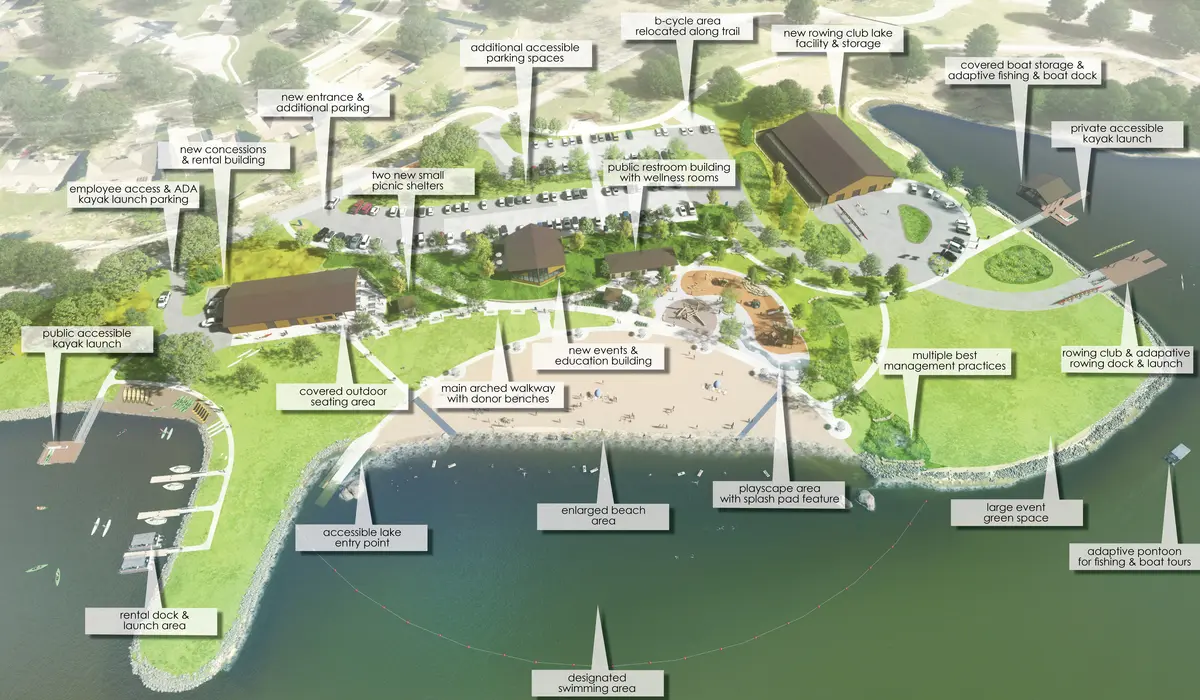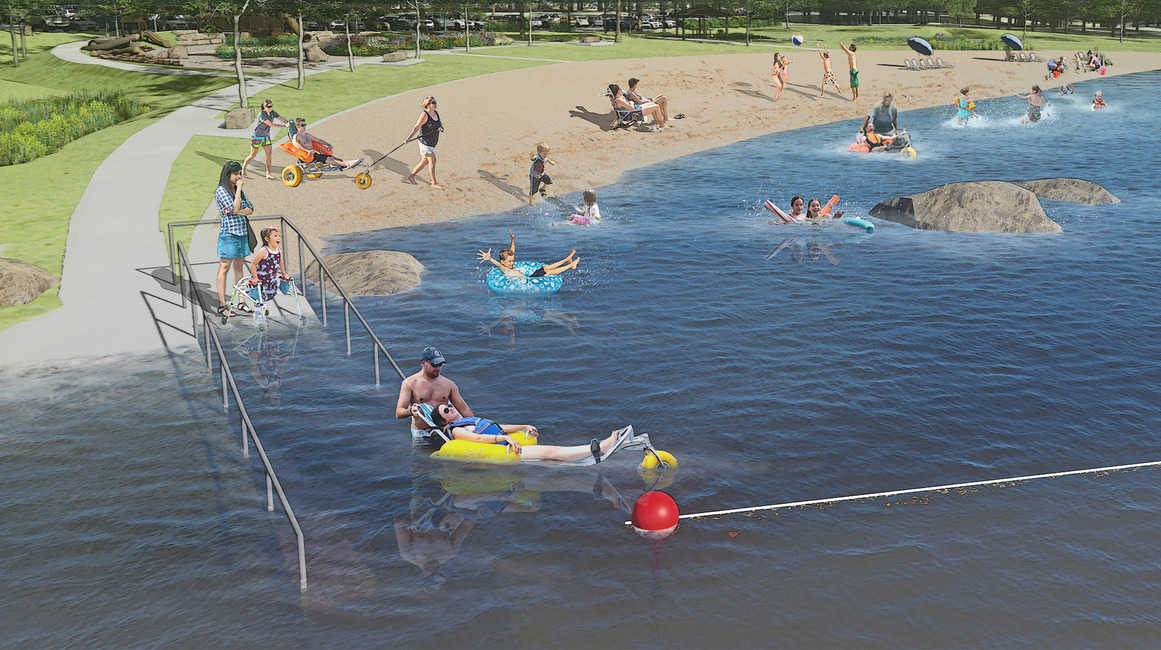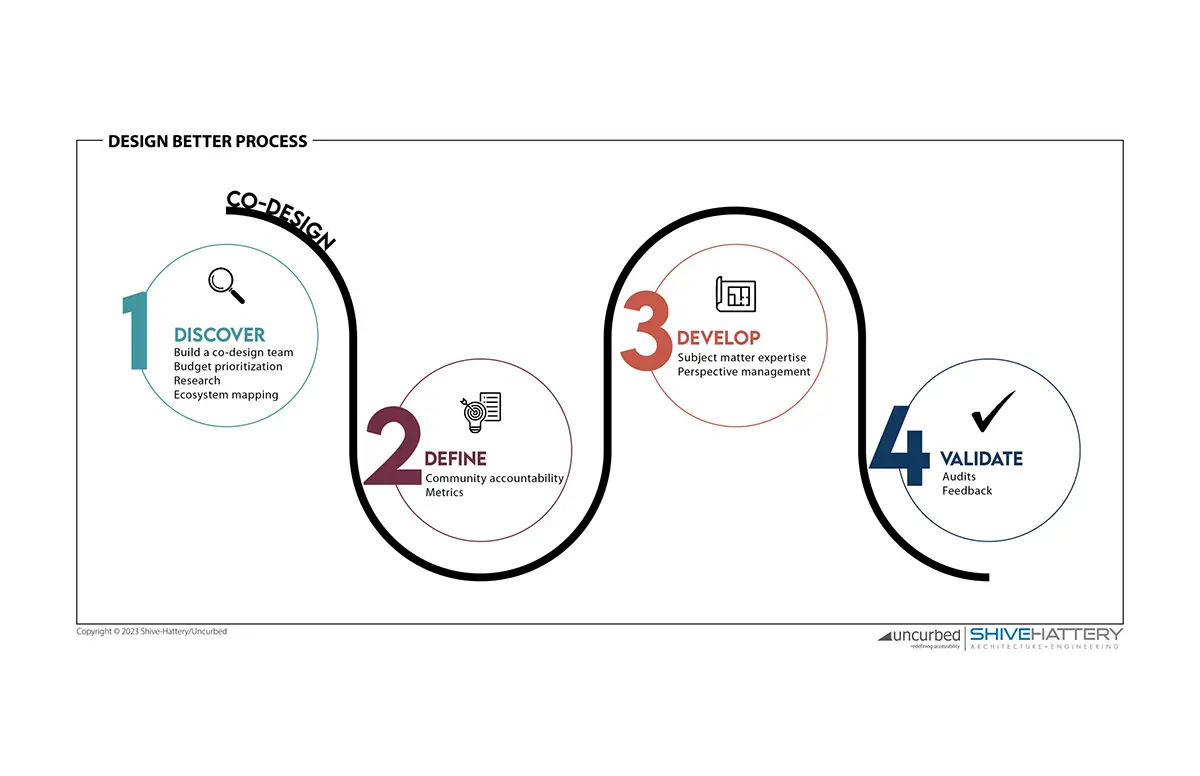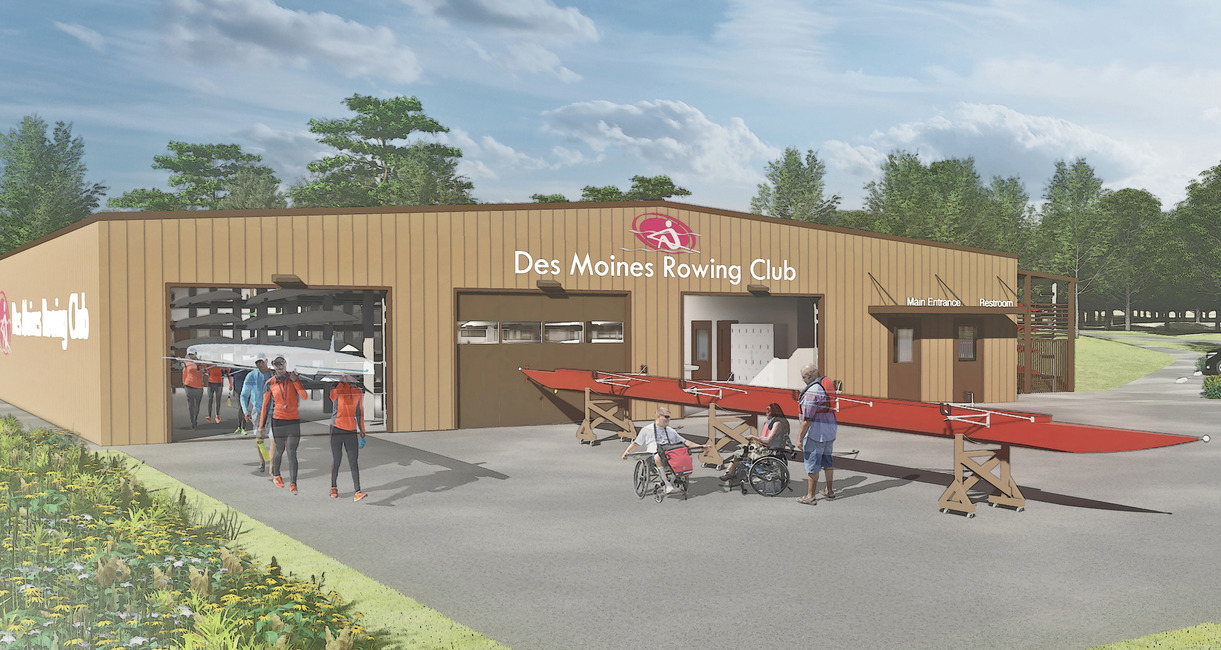Design What Matters, Better:
The master plan for Athene North Shore Recreation Area at Easter Lake began in 2019 with a vision to provide the more than 1.1 million users with access to nature at the most visited amenity in Polk County, Iowa.
The master plan for Athene North Shore Recreation Area at Easter Lake began in 2019 with a vision to provide the more than 1.1 million users with access to nature at the most visited amenity in Polk County, Iowa.

Rendering of the Athene North Shore Recreation Area at Easter Lake master plan. Click to Enlarge.
The master plan for Athene North Shore Recreation Area at Easter Lake began in 2019 with a vision to provide the more than 1.1 million users with access to nature at the most visited amenity in Polk County, Iowa. With over 390,000 persons in Iowa who reported having a disability in 2021, making up 12.5% of the Iowa population, Polk County Conservation recognized the need and opportunity to practice inclusion by creating a universally accessible outdoor recreation space. After 22 years of collaboration, Polk County Conservation turned to the team at Shive-Hattery to take on their biggest project yet: to transform the Athene North Shore Recreation Area at Easter Lake into the most universally designed, diverse and equitable outdoor recreation space possible.

Rendering of zero-entry beach access.
Shive-Hattery formed the Universal and Inclusive Design (UID) team to identify the gaps in knowledge, resources and aspects of the overall design process that creates barriers to implementing universal and inclusive design effectively. The UID team consisted of two universal design experts – internal Shive-Hattery research strategist and interior designer, Courtney Brown, MS, and occupational therapist, founder and owner of Uncurbed, Molly Wuebker, OTD, OTR/L. The unique combination of research strategy, design knowledge, and occupational therapy expertise allowed the UID team to execute ethical and relevant community-based research while considering of the barriers and enablers that may hinder or support participation in research. The comprehensive research that was conducted included surveys, focus groups, individual interviews, multidisciplinary literature reviews, benchmarking and organizational feedback. Outcomes defined the community goals of the project and acted as a compass in moments of decision-making. The combination of client and community goals that integrates a diversity of experiences, perspectives and creativity using co-design strategies was an essential part of the Design Better process throughout the entire life of the project.

Design Better process graphic. Click to Enlarge
A person’s experience with design is multi-dimensional, and these experiences are chain-linked to an entire ecosystem of design interactions and communities of people from start to finish. One break in the chain can lead to access barriers, disrupting an entire experience. By combining concepts from Co-Design, Evidence-Based Design, Systematic Design, and the 8 Goals of Universal Design, the Design Better process can be used to design, build and manage projects, programs, policies or initiatives that can fulfill as many diverse individual user needs as possible including those informed by age, size gender, sexual orientation, ability and disability.
In the Athene North Shore Recreation Area at Easter Lake project, the Design Better process identified the lack of universal design resources available to practitioners who directly impact the lives of end users through their design decisions. To support the core team in their design process and address the lack of resources, the UID team set out to create a design tool that was intuitive, as well as academically backed with current research and best practices in the design and occupational therapy fields. Spending hundreds of hours compiling hundreds of pages of existing documents, public and non-public facing journal articles and vetting the information with the core design team, the UID team developed a series of universal design checklists for outdoor recreation. Modeled after the evidence-based design checklists, available through the Center for Healthcare Design, this information was organized as it relates to universal design principles and goals to create the five categories for universal outdoor recreation area design. The core design team implemented these checklists throughout design development, schematic design and construction documentation to guide design decisions. The UID team was used as a resource to answer questions and address any additional gaps that were found. As a result, the project included amenities such as zero-entry water access, de-escalation rooms, wider walkways, accessible docks and inclusive programmatic elements on the client end (i.e. adaptive equipment, beach mats and sensory gardens).

Rendering of the Des Moines Rowing Club building.
What started as an opportunity to improve outdoor recreation for residents in Polk County evolved into the execution of comprehensive community centered research, the creation of the Design Better process, production of universal design tools, as well as more educated clients and team members with a sharpened conviction toward universal and inclusive design practice.
The universal design checklist series was developed as a tool for the Design Better process with the intent to be distributed throughout the design industry for implementation and continuous collaboration. The ever-evolving definition of inclusivity demands that the tools and processes developed to support it progress accordingly. We are calling on practitioners in the design field to participate in a collaborative effort to improve the universal design checklist series by sharing best practices and lessons learned. In doing so, we hope to help practitioners Design What Matters, Better.
Stay tuned for future content including a detailed overview of the Design Better process and video tutorial on how to use the universal checklist series.